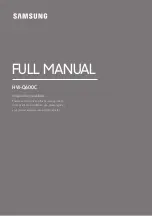
21
4
Cutting current setting.
Carbon steel
Fe 430 B - S275JR
Stainless steel
Aisi 304 / X5 CrNi 18-10
Aluminium
Torch configuration, complete with codes
for consumables to be fitted on the plas-
ma torch.
Air pressure setting.
Indication of the air flow rate (cold air
condition).
Cutting gas indication.
Metric system.
Imperial system.
Thickness of the material to be cut.
Cutting height.
• Shielded consumables: gap between
the shield and the piece to be cut.
• Non-shielded consumables: gap be-
tween the nozzle and the piece to be
cut.
Initial piercing height.
This is the initial gap between the shield
(shielded consumables) or the nozzle
(non-shielded consumables) and the
piece to be cut, when the arc is ignited,
before going down to the cutting height.
The percentage value indicates the in-
crement in cutting height, to obtain the
initial piercing height.
Automatic CNC cutting tables
EN
The following pages contain the cutting tables for each series of consumables for automatic cutting of the following materials:
• Mild steel.
• Stainless steel (CrNi).
• Aluminium.
Each table contains the following information:
NOTE: The arc voltage increases with wearing of the consumables, and so the voltage settings must be increased in order to
maintain the correct gap between torch and plating.
NOTE: The data in the table was obtained during laboratory tests using new consumables and taking the ISO 9013 international
standard as a reference. The precision of plasma cuts depends basically on the interaction between the plasma plant, the guide
system, and the height control. The cutting speed also affects the inclination of the cutting surface.
Piercing delay.
The period of time for which the torch,
with the arc ignited, remains at the initial
piercing height, before beginning the cut-
ting movement at the final cutting height.
Cutting speed and arc voltage settings
(THC systems with torch height control),
which indicate the starting point for find-
ing the best parameters for achieving the
desired result.
Production quality.
To obtain a good cutting angle (0-10°),
and acceptable burrs and surface finish.
These parameters make it possible to
produce a larger number of cut pieces,
but not necessarily with the best quality
cut possible.
Maximum quality.
To obtain the best cutting angle (*) mini-
mum burrs, and the best cutting surface
finish.
(*) 0-6° using standard consumables,
and 0-4° using CLEAN-CUT consuma-
bles.
“Kerf” cutting width. The values indicat-
ed in the cutting tables are indicative and
are obtained using the maximum quali-
ty settings.
Starting from the edge.
Automatic CNC cutting tables
Summary of Contents for SHARK 155
Page 47: ......
















































